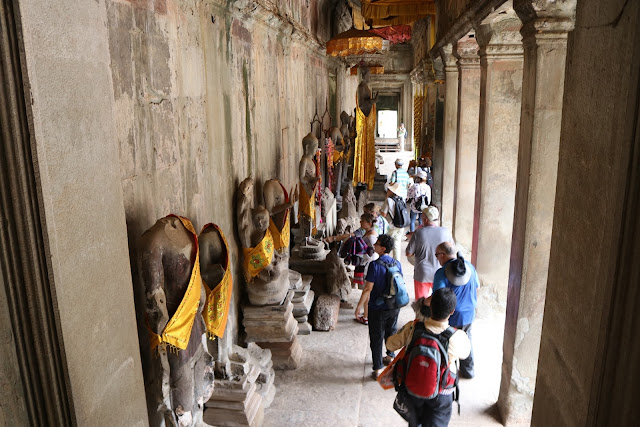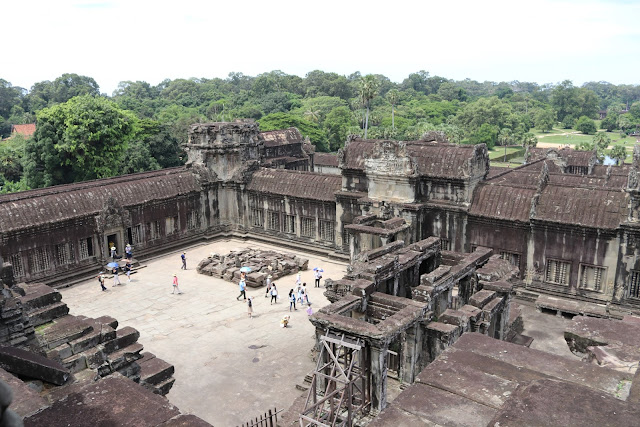When I
learned Angkor Wat was once listed as one of Seven Wonders in the World, I wanted
to visit it. I got my wish as the result
a trip to Southeast Asia this fall.
Angkor
Wat is a temple complex located in Siem Reap, Cambodia and is considered to be
the largest religious monument in the world.
Angkor
Wat was built in the first half of the 12th century (113-5BC). Estimated
construction time of the temple is 30 years by King Suryavarman II, dedicated
to Vishnu (Hindu),
Angkor Wat, the largest monument of
the Angkor group and the best preserved, is an architectural masterpiece. Its
perfection in composition, balance, proportions, relief's and sculpture make it
one of the finest monuments in the world.
Wat is the Khmer name for temple
(the French spelling is "vat "), which was probably added to
"Angkor "when it became a Theravada Buddhist monument, most likely in
the sixteenth century. After 1432 when the capital moved to Phnom Penh,
Angkor Wat was cared for by Buddhist monks.
It is generally accepted that Angkor
Wat was a funerary temple for King Suryavarman II and oriented to the west to
conform to the symbolism between the setting sun and death. The bas-reliefs,
designed for viewing from left to right in the order of Hindu funeral ritual,
support this function.





































 </
</








